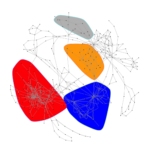It is my pleasure to announce that our journal paper “A Data-driven Method for the Detection of Close Submitters in Online Learning Environments” by Ruipérez-Valiente, J. A., Joksimović, S., Kovanović, V., Gašević, D., Muñoz-Merino, P. J., & Delgado Kloos, C. was presented at the 26th International World Wide Web Conference in Perth, Australia. The article provides an overview of a novel method for detection of the different types of student collaborations in Massive Open Online Courses (MOOCs).
You can find the paper and the presentation slides on the link below:
A data-driven method for the detection of close submitters in online learning environments
Abstract:
Online learning has become very popular over the last decade. However, there are still many details that remain unknown about the strategies that students follow while studying online. In this study, we focus on the direction of detecting ‘invisible’ collaboration ties between students in online learning environments. Specifically, the paper presents a method developed to detect student ties based on temporal proximity of their assignment submissions. The paper reports on findings of a study that made use of the proposed method to investigate the presence of close submitters in two different massive open online courses. The results show that most of the students (i.e., student user accounts) were grouped as couples, though some bigger communities were also detected. The study also compared the population detected by the algorithm with the rest of user accounts and found that close submitters needed a statistically significant lower amount of activity with the platform to achieve a certificate of completion in a MOOC. These results confirm that the detected close submitters were performing some collaboration or even engaged in unethical behaviors, which facilitates their way into a certificate. However, more work is required in the future to specify various strategies adopted by close submitters and possible associations between the user accounts.





































